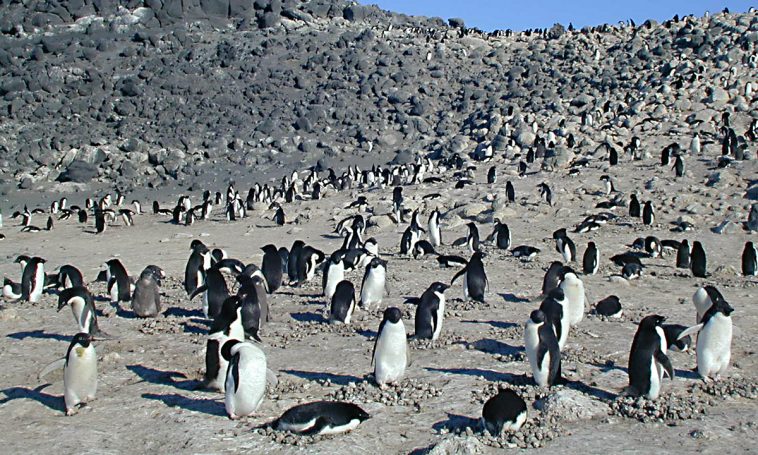
The number of Adélie Penguins, the species most common on the Antarctic Peninsula, has been steadily declining for several decades. At least, that’s what scientists thought, until researchers from the Woods Hole Oceanographic Institution and NASA discovered something interesting in satellite imagery of the Danger Islands, off the peninsula’s northern coast.
The images revealed guano (bird poop) stains stretching across the archipelago, which hinted that a large number of penguins were living in the area. To find out for sure, the researchers headed to the islands a year later, where they found more than 1.5 million birds — enough to be called a “super colony.”

A paper published in the journal Scientific Reports said the discovery of the colony may have implications for understanding the effects of changing temperatures and disappearing sea ice on penguin populations and the region as a whole.
Adélie penguins spend the breeding season (between October and February) living closely together on the rocky coastline. For winter, they venture offshore, living in the sea ice surrounding Antarctica. They are great swimmers, sometimes diving as deep as 575 feet for a mealof shrimp-like krill, fish, or squid. They also don’t mind a long swim, sometimes heading out on a 185-mile round trip to find dinner.

Colony living is vital to the penguins’ survival, as males and females work together to raise the young. They take turns sitting on their eggs to keep them warm and protected from predators. Once the chicks are several weeks old, the parents can leave them alone while they head out to hunt, while the babies huddle together in groups for safety.




